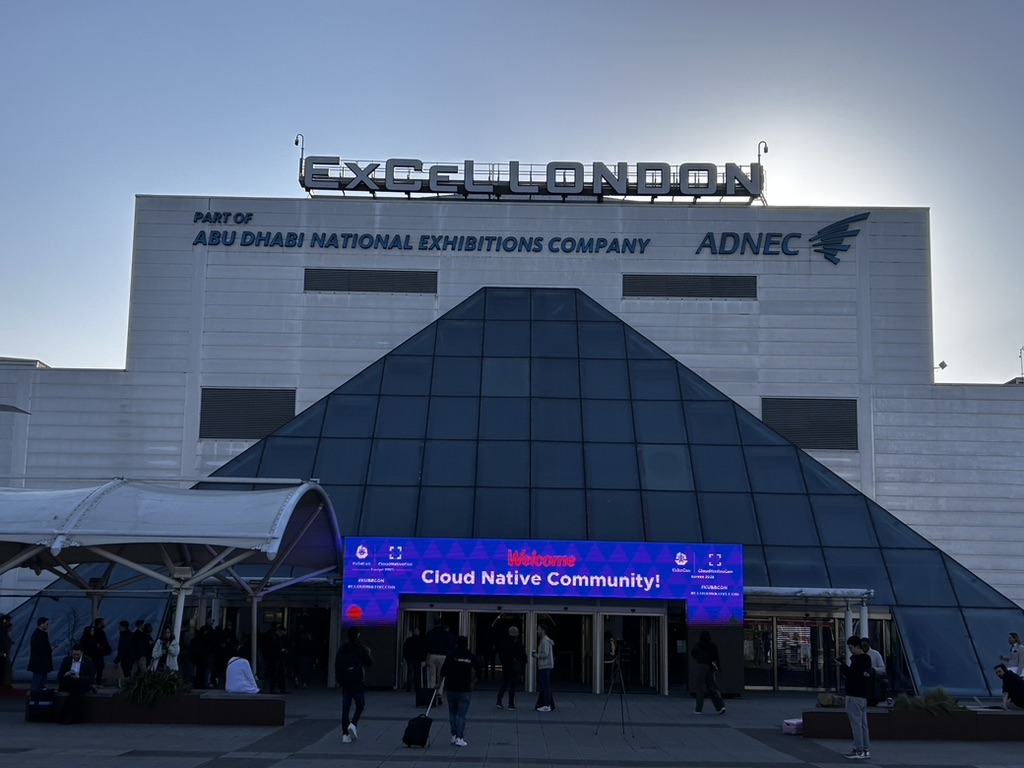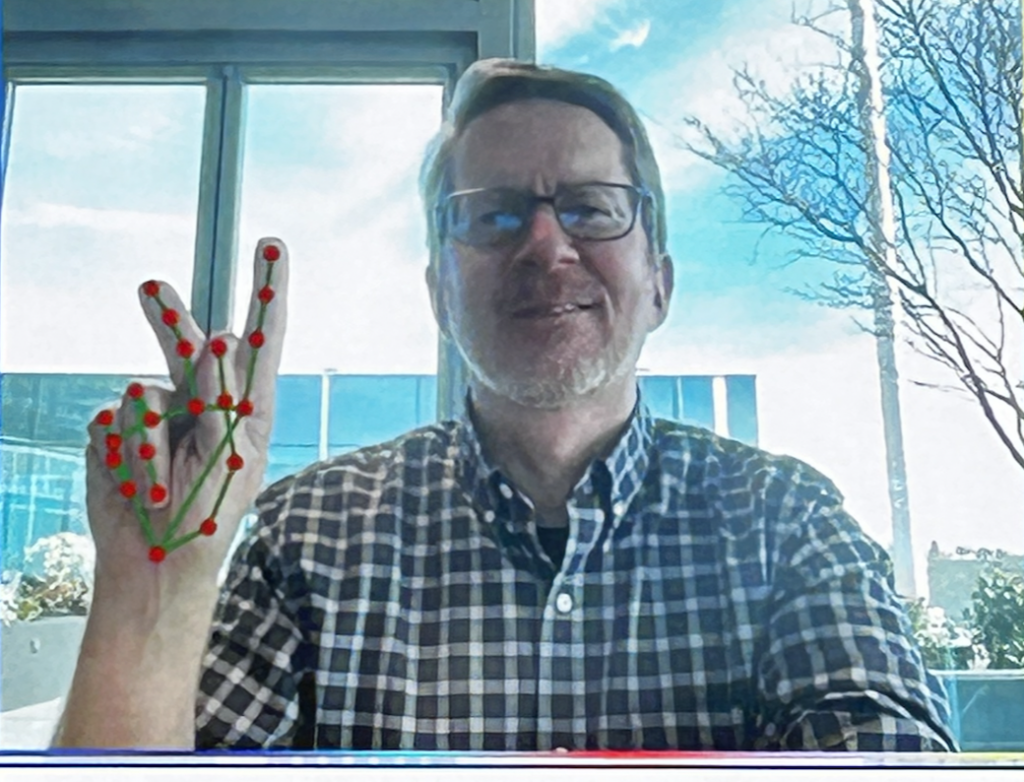Wednesday, April 2nd.
Today is my first day at the KubeCon 2025 in London. It’s 8 AM, I’m in the lobby of my hotel and I can already hear “HAProxy”, “NGINX”, “Pipeline”, and “Kubernetes” here and there. There is no doubt, I am at the right place.

When I walked to the Excel London, I didn’t know what to expect. The place is just huge. The day has not started, and I already know I should have grabbed another pair of shoes.
To give you an idea, they expect between 12 and 15 thousand people….
I’m starting to realize this event is a one-of-a-kind.
Opening session in the Auditorium, my first thought was: how are they gonna fit all these people in?
Well, the Linux Foundation organizers seem to know what they are doing… 😉
Drum rolls, lights shade, this is not just another IT people gathering, it’s a freaking show.
The tone is set, a few welcome words from the CNCF representatives and we are already talking about LLM. This is not a surprise; Artificial Intelligence is everywhere in this Kubecon.
Christin Yen, CEO and cofounder at Honeycomb tells us about observability and the impact of application development on users. How can AI help improve user experience by monitoring response time and analyzing tons of metadata.
Followed by Vijay Samuel, Architect at Ebay enlightening us on how they are making use of AI and LLM: human comprehension is limited, and the systems we manage have become so complex and so big that sorting of logs is impossible without the help of machine learning to attach a root cause to an alert.
Andrew Randall reminds us how awesome Kubernetes is but also how intimidating it can be for novice users. There is no such thing as a simple “apt-get install kubernetes” command: willing to install a Vanilla Kubernetes? You’d have to figure it out yourself, it’s a steep learning curve before you can even deploy your first cluster.
Based on this observation and willingness to reduce the impact on developers’ productivity, Microsoft has announced a new project called Headlamp, designed to make Kubernetes easier to use and, above all, easier to adopt. It comes with an in-cluster web portal (a k8s dashboard), a unified UI for multiple remote clusters, and a “Kubernetes Desktop”.
Pretty much like what our SUSE friends have accomplished with the great SUSE Rancher ;-). Let’s see!
Greg Kroah-Hartmann (Linux maintainer, Linux Foundation) attended to discuss the Linux Kernel and how they are integrating Rust and C into it.
Today’s Linux kernel contains 34 million lines of C, and about 25000 lines of Rust code.
Rust brings more safety as it allows the kernel to “crash safely” when an error occurs and makes the code more “maintainable”. Rust can prevent a huge majority of security issues at build time, not at review time: code is simpler, reviewing is easier, fewer bugs, more fun!
Closing the keynote with a great use-case of AI, I loved it because it really demonstrated how technology can improve people’s lives and I truly believe this is what technology should be about: moving science forward, promoting education, and closing the gap between our societies. Indeed, Rob Koch from Slalom explained how AI, combined with Kubernetes, is revolutionizing the world of deaf people with AI-driven sign language interpretation and recognition.
He explained the challenges they’re facing as it is overly complicated for a machine to capture the movement of a hand when hand-signing.
Making the difference between a “P” and a “Q” is a good example of this complexity as these 2 signs are very similar in sign language and capturing the right sign highly depends on the camera’s angle of view: perspective and scaling are important. AI models need a phenomenal amount of authentic data and scenarios to be trained. Moreover, machines need to “understand” the context of the conversation, not only words.
Kubernetes is ideal for that as it provides scaling capabilities, resource optimization for video processing, and task repeatability.

End of the keynote, it’s time for me to wander the corridors of the KubeCon and visit the booths.
All the big tech players are there of course…. but dozens of open source projects that we use daily within our infrastructures are represented and have a booth. It’s great to see that Open Source solutions are everywhere and everybody’s using them. I feel like a kid in a candy shop!
Alright, let’s “get some swag”. There are enough tee shirts, stickers, and other cool gadgets at this KubeCon for me to fill a massive suitcase, but I will try to be reasonable. Everyone has something to propose: hats, backpacks, tote bags, stickers, keyrings, lego sets. It’s too tempting, let’s see how long I can refrain from taking it all.
Visiting the RedHat stand:
I met with Stevan Le Meur, a developer at RedHat and we had a great exchange on what RedHat does with regards to Kubernetes. Stevan specializes in bootable containers and invited me to take a closer look at what bootc and podman can achieve.
The occasion for me to talk about our YaK project. Why not consider bootable containers with the YaK in a future release?
That’s clearly a topic we can discuss during our next roadmap meeting, let’s see if we add it to the list of upcoming features…

Walking down the hallway, I passed by the Linux Foundation booth where the topic being discussed was the certification exams.
For those interested in the CKA (Certified Kubernetes Administrator) exam, know that a new version has just been released.
This new version is a bit more difficult than the previous one, the passing score is still 66% and the format has not changed: it is still a proctored hands-on lab exam.
Good resources to practice before the exam: killer.sh (https://killer.sh/) , and the great environments and training material provided by KodeKloud (https://kodekloud.com/)
That’s enough reading for today.
![Thumbnail [60x60]](https://www.dbi-services.com/blog/wp-content/uploads/2022/08/GRE_web-min-scaled.jpg)
![Thumbnail [90x90]](https://www.dbi-services.com/blog/wp-content/uploads/2022/08/DWE_web-min-scaled.jpg)
![Thumbnail [90x90]](https://www.dbi-services.com/blog/wp-content/uploads/2022/08/NME_web-min-scaled.jpg)
Mirka
22.04.2025A very nice blog post! I was wondering how was the event :)